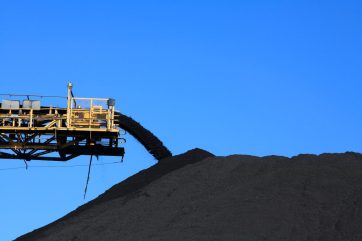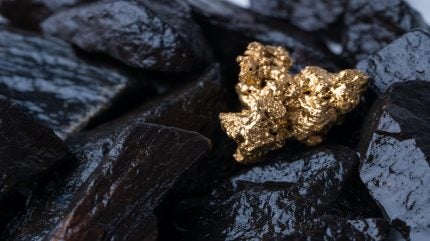
Australia was the fifth-largest hard coal producer in 2021, trailing China, India, the US and Indonesia. The country mines its large coal resources both for internal use and export.
Even though the share of coal in its power mix has decreased, Australia ranked second among the International Energy Agency (IEA) member nations in terms of coal usage in energy production and electricity generation in 2021. According to an IEA report, Australian hard coal production increased from 348 million tonnes (Mt) in 2010-2011 to 420 Mt in 2020-2021 at a compound average annual growth rate of 1.9% throughout the last ten years.
Nevertheless, China’s unofficial import ban on metallurgical coal imports, the global Covid-19 pandemic, a shortage of labour, and unfavourable weather due to the La Niña phenomenon, which brings heavy rainfall and severe storms, have all negatively impacted Australia’s overall coal production and exports in recent years, the report said.
Meanwhile, despite mixed signals from the government, non-renewable energy production in Australia continues to contradict its efforts to mitigate climate change.
Coal consumption and government Initiatives
By 2030, emissions resulting from the use of coal must peak and sharply decline in order to stay within the 1.5°C target set by the Paris Agreement, the IEA report says.
Given that many coal-importing countries and companies have committed to achieving net zero emissions by 2050, Australia’s trading partners that have submitted nationally determined contributions (NDC) may see a decline in coal usage.
Access the most comprehensive Company Profiles on the market, powered by GlobalData. Save hours of research. Gain competitive edge.

Your download email will arrive shortly
We are confident about the unique quality of our Company Profiles. However, we want you to make the most beneficial decision for your business, so we offer a free sample that you can download by submitting the below form
By GlobalData
From 1 July 2023, the Australian Government capped the price of coal used to generate electricity at A$125 a tonne in collaboration with the New South Wales and Queensland Governments. It was part of an A$1.5bn programme meant to reduce annual utility costs for customers by roughly A$230.
“Coal price caps were implemented to address the domestic impact of high global thermal coal prices resulting from the war in Ukraine,” a spokesperson for Climate Change and Energy Minister Chris Bowen told the Sydney Morning Herald.
However, as the government looks for cost-of-living solutions, Bowen is prepared to lift the federal government’s restriction on coal prices, with compensation worth hundreds of millions of dollars to power companies. Bowen has yet to make a final decision.
The tabloid newspaper also reported that the total cost of the compensation to coal companies would be “in the order of A$1.5bn to A$2bn, with the Commonwealth paying a 50% share”.
The Energy Price Relief Plan serves as a supplementary measure to the government’s extended energy transformation strategy for Australia. As Australia moves towards a renewable energy system, this includes cooperating with the states and territories through the National Energy Transformation Partnership to “maintain reliable, secure and affordable electricity”.
The Australian coal industry is also pushing and funding the development of low-emission technologies (LET), including carbon capture, utilisation and storage (CCUS), lignite-based CCUS, and gasification-based hydrogen production. The government has made investments totalling A$790m in linked emissions technology, including CCUS, since 2008.
The Australian Government stated that 82% of the country’s electricity would come from renewable sources, the IEA said. However, there is still ambiguity regarding the coal consumption trend and the retirement rate.
Curbing carbon and methane emissions
LETs are innovative technologies created to reduce the environmental effects of high-emission processes and drastically cut greenhouse gas emissions. Many heavy industries, such as the production of steel, cement, and fertiliser, as well as the generation of power and electricity, can use them.
One type of LET is CCUS. Currently, 26 operational large-scale carbon-capture facilities in Norway, Canada, the US, Australia, and Japan are eliminating emissions from the production of steel and cement, refineries, and even power plants, according to the technology investor Low Emission Technology Australia.
However, there are doubts about the effectiveness of CCUS. One project at the Gorgon gas plant, located on the Barrow Island nature reserve off the coast of Western Australia’s Pilbara, only managed to store about a third of the targeted quantity of carbon. As a result, the project’s supporters are now forced to purchase carbon offsets.
Methane emissions are another issue that needs to be tackled. A voluntary framework known as the Global Methane Pledge (GMP) encouraged countries to take steps to reduce methane emissions by 30% from 2020 levels by 2030. By 2050, this could remove more than 0.2℃ of warming, according to the UN-initiated Climate and Clean Air Coalition (CCAC).
The US and the European Commission, partners in the CCAC, introduced the GMP at COP26 in 2021. More than 150 countries currently participate in the GMP, accounting for about half of all anthropogenic methane emissions worldwide.
The Australian coal industry has also emphasised finding methane sources and using commercially available technologies to minimise those emissions in underground operations.
However, fugitive emissions from surface open-cast mines comprise 80% of total emissions and are currently unabated. Australia is working on several methane reduction strategies, but there is no national objective despite the country’s recent commitment to join the GMP.
Phasing out coal in Australia
Australia’s legally mandated targets of achieving net-zero emissions by 2050 and 43% reductions in emissions by 2030, along with the shifting dynamics of power generation economics, impact the prospects for coal.
There is no set timeline for the ultimate phase-out of coal-fired power facilities or the closure of coal mines in the country. Coal-fired generators are required by law to notify the public of any closure plans three and a half years in advance. The IEA argues that this short notice may be insufficient to suggest investing in a new dispatchable facility in time.
The IEA has urged the Australian Government to ensure that closures of coal-fired power plants are carefully coordinated with the owners of the power plants, the Australian Electricity Market Operator, and the states and territories.
The government is also encouraging a transition of coal mining expertise and resources to critical minerals mining and to lower-emission sectors such as green steel and cement.
One of the core problems remains Australia’s divided political views regarding resources. Australia is still debating the use of renewables and nuclear energy, which emerged as a hot topic from COP28 in Dubai and has sparked nationwide controversy. Despite committing to the goal of tripling renewable energy at COP28, Australia’s Coalition government promised to triple nuclear energy if the opposition leader is elected Prime Minister.
Mining Technology also reported that Australia did not consider phasing out fossil fuels until 2021 and refused to join the 40 nations that committed to ending the use of coal power before the COP26 summit.
With coal used in 64% of domestic energy production, 32% of total energy supply, and 53% of electricity generation, it may yet take a while before coal stops dominating Australia’s energy sector.
Sign up for our daily news round-up!
Give your business an edge with our leading industry insights.




